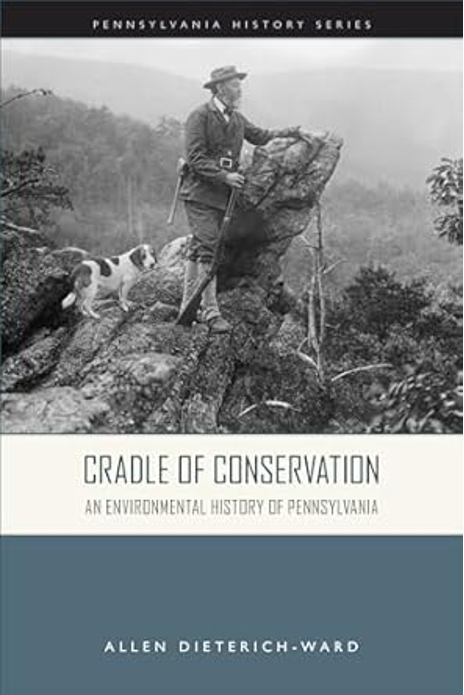Pennsylvania is a pioneer in the intentional conservation of farmland.
Pennsylvania is a leader in conserving farmland

This relatively recent movement for institutional land preservation started with Lancaster County’s creation in 1980 of the first “Agricultural Preserve Board” in the state, as the commissioners implemented a popular program to use tax income to maintain working farms and buy development rights of endangered private properties.
In 1988, the Commonwealth enacted agricultural preservation legislation, creating programs in most counties. (In Centre County, two members of the first Ag Land Preservation Board would go on to co-found the Centre County Farmland Trust. See note below.)
Over the next 30 years, the Pennsylvania Agricultural Conservation Easement Purchase Program approved more than 6,500 farms for easement purchases representing more than 650,000 acres.
Cradle of Conservation
All of this information and much more is in a recently published book, Cradle of Conservation: an Environmental History of Pennsylvania (Temple University Press, 2024.)
In a concise, engaging, 110 pages plus notes, Allen Dieterich-Ward of Shippensburg University traces major events and people in the history of environmental conservation in the Commonwealth.
Familiar Figures
Many central Pennsylvania names came alive for me, including Joseph Rothrock and Gifford Pinchot. The author does not shy away from the more difficult aspects, including challenges for Black people and women of all races in the conservation field.
(Dieterich-Ward tells the stories of Ralph Brock, the country’s first Black forester, and MiraLloyd Dock, who in the early 20th century personally investigated deforested and abandoned land, resulting in over 175,000 acres that was purchased in her time with the Forest Reservation Commission.)
The central role of the land is evident in every chapter, beginning with “Creating Penn’s Woods” and ending with “Postindustrial Pennsylvania.” There are numerous black & white photos provided by the Pennsylvania State Archives.
The book has suggested to me multiple topics to explore in more detail: Creation myths of Indigenous inhabitants, the Chestnut Blight, farm and urban runoff mitigation for the Chesapeake, Three Mile Island its and effect on farmland, Marcellus Shale, environmental politics and legislation. The author concludes with observations on the possible future of Penn’s Woods in this era of climate change and land usage debates.
Lots to think about!
More to Explore:
- E. Lynn Miller and William Keough served on Centre County’s Ag Land Preservation Board, established in 1989 to administer Pennsylvania’s agriculture preservation program in Centre County. Miller and Keough would go on to co-found the Centre County Farmland Trust in 1994 as a non-profit land trust and option for landowners who wanted to donate their development rights to enact a conservation easement — instead of being compensated for the easement. Learn more of CCFT’s history.
- Read or listen to an interview with author Allen Dieterich-Ward on the The Allegheny Front, a weekly news program on the environment in Pennsylvania.
~ By Linda Friend, CCFT Trustee, Secretary & Contributor & Pennsylvania Master Naturalist